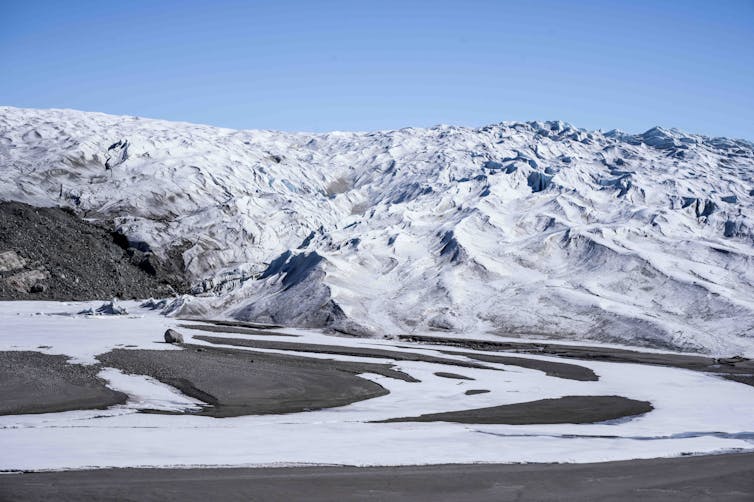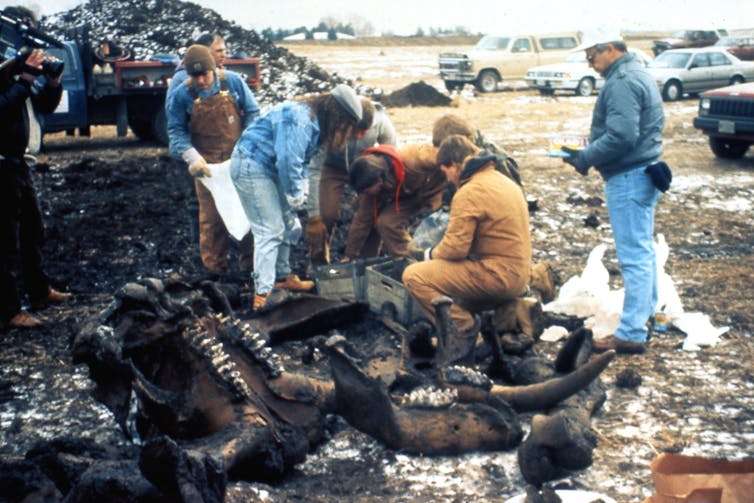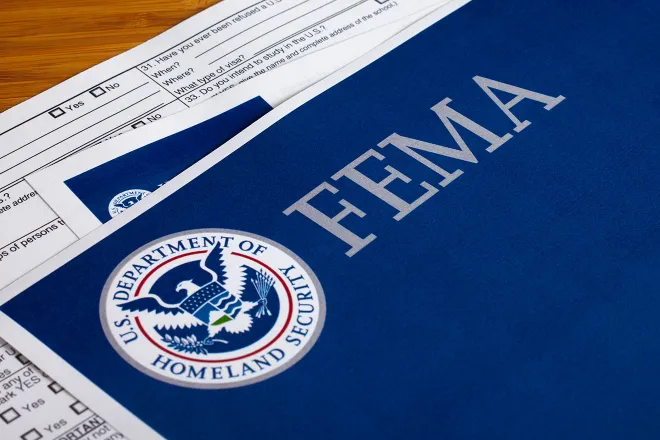
Curious Kids: How many ice ages has the Earth had, and could humans live through one?

Denise Su, Arizona State University

Curious Kids is a series for children of all ages. If you have a question you’d like an expert to answer, send it to curiouskidsus@theconversation.com.
How many ice ages has the Earth had, and could humans live through one? – Mason C., age 8, Hobbs, New Mexico
First, what is an ice age? It’s when the Earth has cold temperatures for a long time – millions to tens of millions of years – that lead to ice sheets and glaciers covering large areas of its surface.
We know that the Earth has had at least five major ice ages. The first one happened about 2 billion years ago and lasted about 300 million years. The most recent one started about 2.6 million years ago, and in fact, we are still technically in it.
So why isn’t the Earth covered in ice right now? It’s because we are in a period known as an “interglacial.” In an ice age, temperatures will fluctuate between colder and warmer levels. Ice sheets and glaciers melt during warmer phases, which are called interglacials, and expand during colder phases, which are called glacials.
Right now we are in the most recent ice age’s warm interglacial period, which began about 11,000 years ago.
What was it like during the ice age?
When most people talk about the “ice age,” they are usually referring to the last glacial period, which began about 115,000 years ago and ended about 11,000 years ago with the start of the current interglacial period.
During that time, the planet was much cooler than it is now. At its peak, when ice sheets covered most of North America, the average global temperature was about 46 degrees Fahrenheit (8 degrees Celsius). That’s 11 degrees F (6 degrees C) cooler than the global annual average today.
That difference might not sound like a lot, but it resulted in most of North America and Eurasia being covered in ice sheets. Earth was also much drier, and sea level was much lower, since most of the Earth’s water was trapped in the ice sheets. Steppes, or dry grassy plains, were common. So were savannas, or warmer grassy plains, and deserts.
Many animals present during the ice age would be familiar to you, including brown bears, caribou and wolves. But there were also megafauna that went extinct at the end of the ice age, like mammoths, mastodons, saber-toothed cats and giant ground sloths.
There are different ideas about why these animals went extinct. One is that humans hunted them into extinction when they came in contact with the megafauna.

Wait, there were humans during the ice age?!
Yes, people just like us lived through the ice age. Since our species, Homo sapiens, emerged about 300,000 years ago in Africa, we have spread around the world.
During the ice age, some populations remained in Africa and did not experience the full effects of the cold. Others moved into other parts of the world, including the cold, glacial environments of Europe.
And they weren’t alone. At the beginning of the ice age, there were other species of hominins – a group that includes our immediate ancestors and our closest relatives – throughout Eurasia, like the Neanderthals in Europe and the mysterious Denisovans in Asia. Both of these groups seem to have gone extinct before the end of the ice age.
There are lots of ideas about how our species survived the ice age when our hominin cousins did not. Some think that it has to do with how adaptable we are, and how we used our social and communication skills and tools. And it appears that humans didn’t hunker down during the ice age. Instead they moved into new areas.
For a long time it was thought that humans did not enter North America until after the ice sheets started to melt. But fossilized footprints found at White Sands National Park in New Mexico show that humans have been in North America since at least 23,000 years ago – close to the peak of the last ice age.
Hello, curious kids! Do you have a question you’d like an expert to answer? Ask an adult to send your question to CuriousKidsUS@theconversation.com. Please tell us your name, age and the city where you live.
And since curiosity has no age limit – adults, let us know what you’re wondering, too. We won’t be able to answer every question, but we will do our best.![]()
Denise Su, Associate Professor, Arizona State University
This article is republished from The Conversation under a Creative Commons license. Read the original article.

















